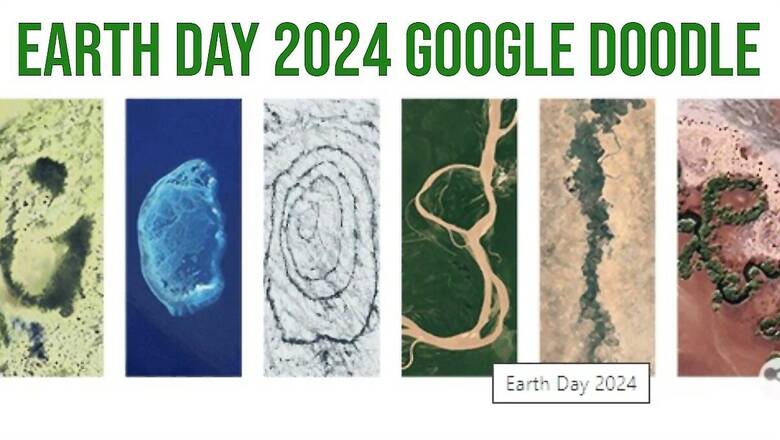
views
Earth Day 2024 Google Doodle is a stunning visual masterpiece, featuring captivating aerial photographs that showcase our planet’s breathtaking natural beauty and the rich biodiversity it supports. But more importantly, the Doodle serves as a powerful reminder of the critical need to protect these wonders for future generations.
Each letter of the Google logo transforms into a window onto a different location where people, communities, and governments are actively engaged in conservation efforts.
From the turquoise waters surrounding the Turks and Caicos Islands to the lush rainforests of Jaú National Park in Brazil, the Doodle takes you on a global expedition highlighting humanity’s dedication to preserving our planet.
WATCH: Behind the Doodle
The Doodle also offers a glimpse into the challenges we face. The majestic Vatnajökull National Park in Iceland, for instance, is a UNESCO World Heritage Site that protects a unique ecosystem threatened by climate change. Similarly, the Great Green Wall initiative in Africa tackles the issue of desertification by restoring land and promoting sustainable practices.
By showcasing these diverse locations, Google’s Earth Day Doodle delivers a message of hope and optimism. It reminds us that while there’s much work to be done, we have the power to make a positive impact. Let’s all be inspired to take action and ensure a healthy planet for ourselves and generations to come.
A LOOK INSIDE THE GOOGLE LETTERS
- GTurks and Caicos Islands. The islands are home to important biodiversity areas with conservation efforts aimed at addressing ongoing environmental challenges, including protecting natural resources and reefs and restoring endangered species like the Turks and Caicos Islands rock iguana.
- OScorpion Reef National Park, Mexico. Also known as Arrecife de Alacranes, this is the largest reef in the southern Gulf of Mexico and UNESCO biosphere reserve. The marine protected area serves as a refuge for complex coral and several endangered bird and turtle species.
- OVatnajökull National Park, Iceland. Established as a national park in 2008 after decades of advocacy, this UNESCO World Heritage Site protects the ecosystem in and around Europe’s largest glacier. The mix of volcanoes and glacial ice produce rare landscapes and flora.
- GJaú National Park, Brazil. Also known as Parque Nacional do Jaú, this is one of South America’s largest forest reserves and a UNESCO World Heritage Site. Located in the heart of the Amazon rainforest, it protects a huge range of species, including the margay, jaguar, giant otter, and the Amazonian manatee.
- LGreat Green Wall, Nigeria. Started in 2007, this African Union-led initiative is restoring land affected by desertification across the width of Africa, planting trees and other vegetation while implementing sustainable land management practices. This also provides the people and communities in the area with increased economic opportunities, food security, and climate resilience.
- EPilbara Islands Nature Reserves, Australia. Located by one of the Pilbara Island Nature Reserves, one of 20 nature reserves in Australia that help protect fragile ecosystems, increasingly rare natural habitats, and a number of threatened or endangered species—including multiple species of marine turtles, shorebirds, and seabirds.


















Comments
0 comment